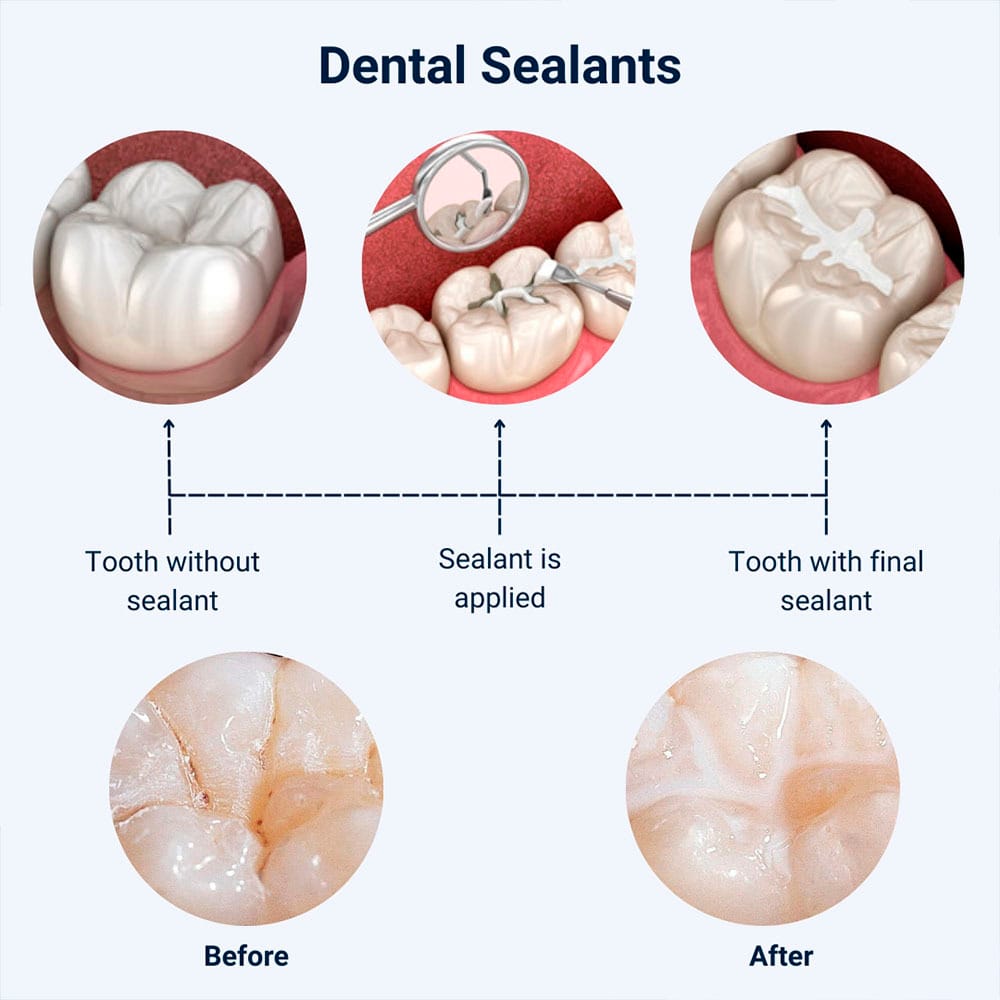The reason these grooves are so susceptible to decay is that normal brushing and flossing do not reach into their crevices and depressions to extract food particles and plaque.
Different Types of Dental Sealants
Sealants are typically produced from glass ionomer or composite material. Glass ionomer sealants have some advantages: they release fluoride while acting as a physical barrier to decay, and they do not require a completely dry field for application, so they can be used on emerging molars.
Some sealants change color when they dry, lessening the possibility that invisible gaps will be left during the application process. Other sealants offer the benefit of being stronger and more durable, making them an appropriate choice for children, teenagers or adults who grind their teeth, a condition known as bruxism.

Candidates for Dental Sealants
Because children and teenagers are more likely to develop pit and fissure decay, youngsters are good candidates for dental sealants. The reasons young people suffer from dental decay more than adults are numerous, including dietary choices, more or less constant drinking (such as toddlers with bottles or sippy cups), and less than adequate dental hygiene. Nonetheless, adults can benefit from sealants as well.
Sealants are usually put on children who already have their permanent molars, but in children at high risk for cavities, sealants may be recommended for primary molars as well.
The Dental Sealant Procedure
The dental sealant procedure takes a few minutes for each tooth. The dentist cleans the tooth and paints the plastic sealant onto the enamel where it bonds to the enamel as it hardens. This coating works as a barrier to prevent plaque from building up and attacking the enamel. A special light may be used to speed the hardening and bonding process.
As long as the sealant remains intact and in good condition, the surface of the tooth will remain protected. Sealants have been found to endure several years of normal chewing before reapplication is necessary. During routine checkups, the dentist checks on the durability of the sealant to assess whether and when reapplication is needed. At Clock Tower Dental, our dental services include regular checkups to monitor the condition of sealants and ensure your teeth stay well-protected against cavities.

